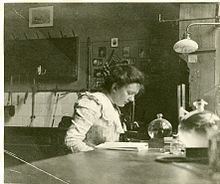Nationality German Education PhD (1904) | Patrons Wilhelm Schüffner | |
 | ||
Born February 2, 1877 ( 1877-02-02 ) Residence BerlinBaliSumatraJavaAmsterdam Institutions Imperial Ministry of Health (Kaiserliches Gesundheitsamt)Institute for Tropical Hygiene, Netherlands Died 29 August 1943, Westerbork concentration camp Alma maters Humboldt University of Berlin, Heidelberg University | ||
Margarete Hedwig Zuelzer (2 February 1877 – 29 August 1943) was a German biologist and zoologist specializing in the study of protozoa.
Biography
Margarete Zuelzer was the daughter of Jewish textile manufacturer Julius Zuelzer (1838–1889) and Henriette née Friedlaender (1852–1931). She studied natural sciences at the Humboldt University of Berlin and at the University of Heidelberg. She was among the first generation of women to officially attend university in Germany. Studying science in particular was so unusual for a woman at the time that Zuelzer had to get special permission from each of her professors to attend their classes. She earned her doctorate in 1904 with a dissertation on Difflugia urceolata Carter, a protozoa. This made her the 37th woman to have earned a doctorate at the University of Heidelberg and the sixth to have earned one from its faculty of natural sciences.
In 1907, she became the assistant at the water treatment center in Berlin. In 1916, she took a position at the Imperial Ministry of Health (Kaiserliches Gesundheitsamt), later the Reich's Ministry of Health (Reichsgesundheitsamt). After 1919, she led the Protozoa Laboratory in Berlin-Dahlem and continually served as one of the few women on the advisory board, sometimes the only one.
From 1926 to 1929, she was invited by the Dutch government to carry out a research study on "Weil's disease" in the Dutch Indies, specifically in Bali, Sumatra, and Java. There, she became friends with German-Dutch biologist Wilhelm Schüffner.
In April 1933, she lost her position at the Protozoa Laboratory due to the Law for the Restoration of the Professional Civil Service, which allowed civil servants of "non-Aryan descent" to be dismissed. Zuelzer wrote an appeal demonstrating her ancestors' support of German nationalism, but this made no difference. In October 1939, Zuelzer immigrated to the Netherlands, where she procured a position at the Institute for Tropical Hygiene, which was led by Wilhelm Schüffner.
Her sister Gertrud Zuelzer, a noted painter, was arrested in September 1942 and sent to Theresienstadt after a failed attempt to flee Germany to Switzerland. Margarete sent Gertrud packages of clothing and colored pencils with which Gertrud drew portraits of other prisoners in exchange for food. Gertrud credited her sister Margarete's packages as the reason that she was able to survive.
In April 1943, Margarete Zuelzer was forced to move into a Jewish ghetto in Amsterdam. On May 21, she was sent to the Westerbork Transit Camp. Before her deportation, her friend and colleague Wilhelm Schüffner had attempted in vain to procure a special position for her. She died of starvation in the Westerbork Transit Camp on August 23, 1943, aged 66.
In 2012, a Stolperstein ("stumbling stone") was laid in her memory at Eichkampstrasse 108 in Berlin, her last residence in the city.
